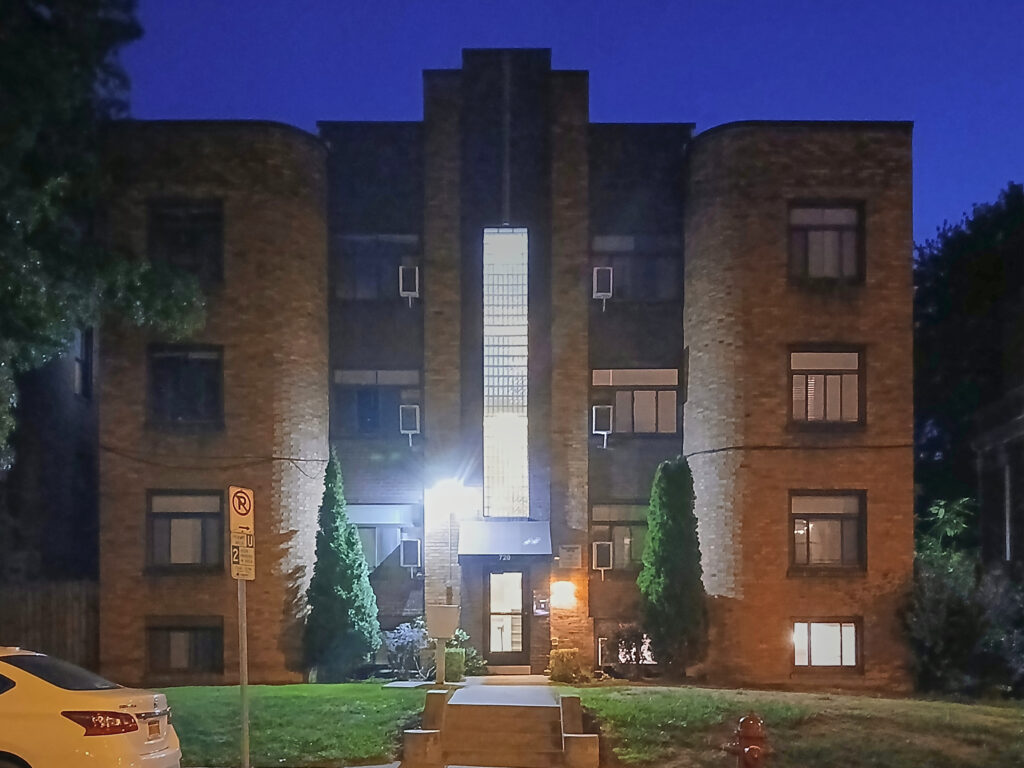
This phone-camera picture is soupy with noise reduction if you enlarge it, but it gives us a good idea of how the Flash Gordon glass-block window in the stairwell looks at night.

The Negley was probably built in about 1909; the architects were the firm of Janssen & Abbott. Some of the original details have vanished over the years, but Benno Janssen’s spare version of Georgian style still leaves an impression of dignity and elegance.
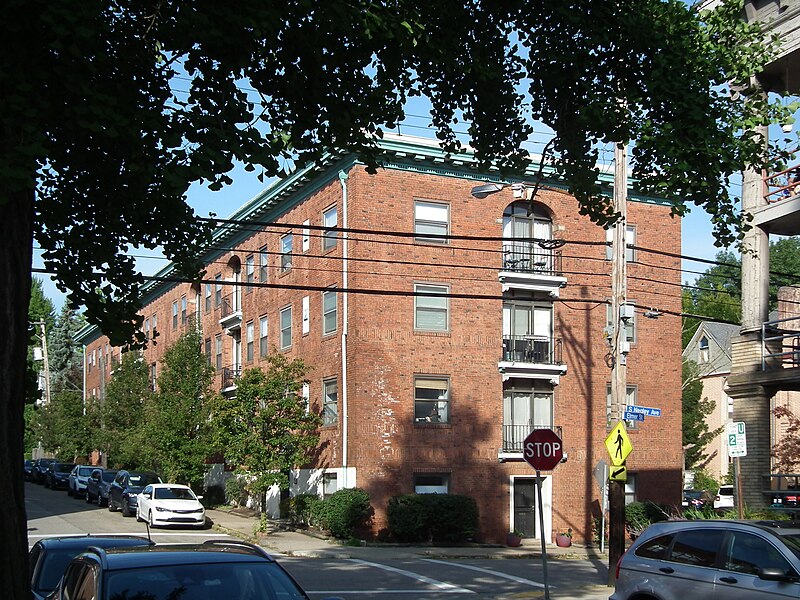



An unusual choice: the doorway frames are cast iron.


Pembroke Place is a street of unusually fine houses in the very rich part of Shadyside. We have already seen the Acheson House; here is a generous album of other houses on the street.

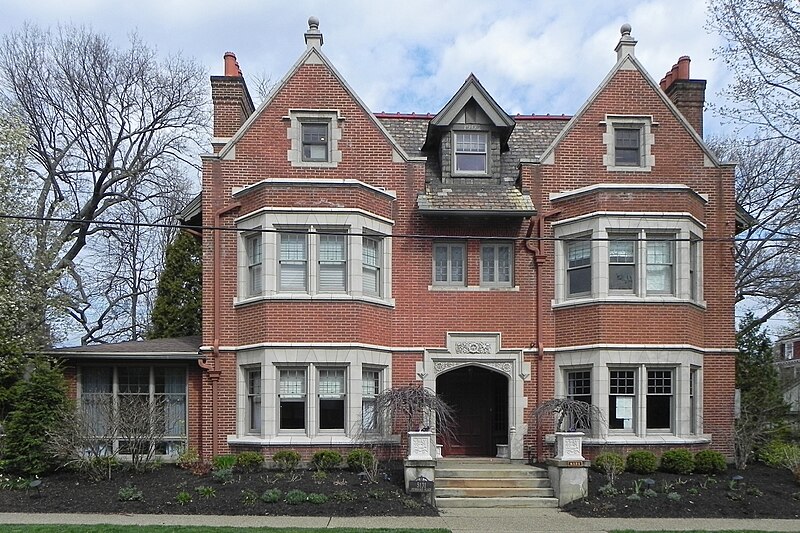
An elegant Tudor or Jacobean mansion designed by MacClure & Spahr and built in 1903, as the dormer tells us. This Post-Gazette story (reprinted in a Greenville, North Carolina, paper that does not keep it behind a paywall) tells us that a 1925 addition was designed by Benno Janssen, who had worked in the MacClure & Spahr office and may have had some responsibility for the original design. The article also tells us how vandals masquerading as interior designers rampaged through the house and painted all the interior woodwork white or pale grey to “banish dark wood,” but at least the exterior is in good shape.
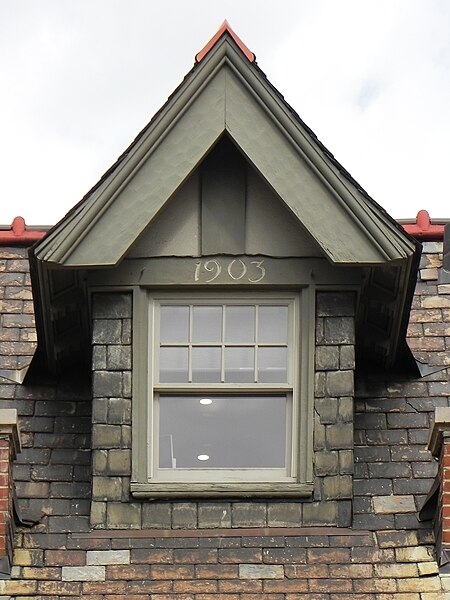
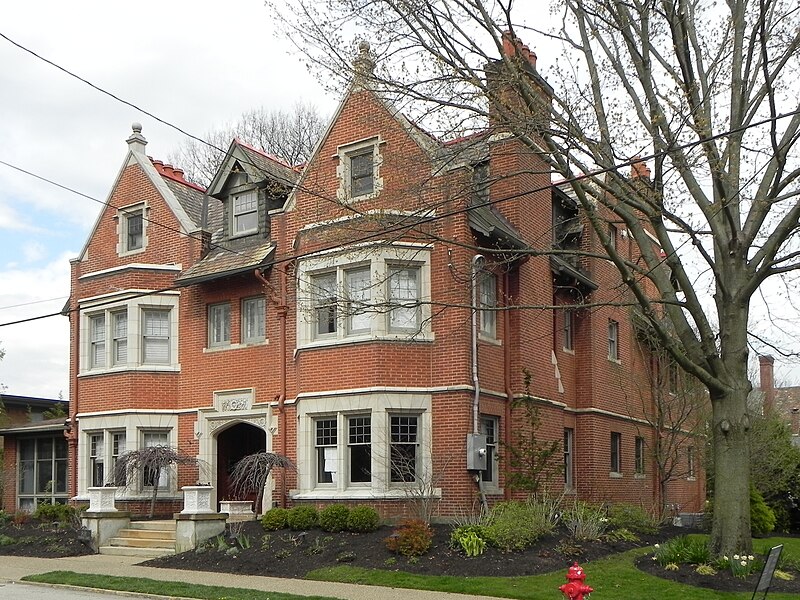


Originally the Kent and the Howe, this pair of attached buildings was renamed for its most prominent decorative feature—the lion’s heads that preside over each entrance. The architects were the Chicago firm of Perry & Thomas, who were responsible for a number of apartment buildings in Shadyside and Oakland; they were especial favorites of the developer John McSorley.
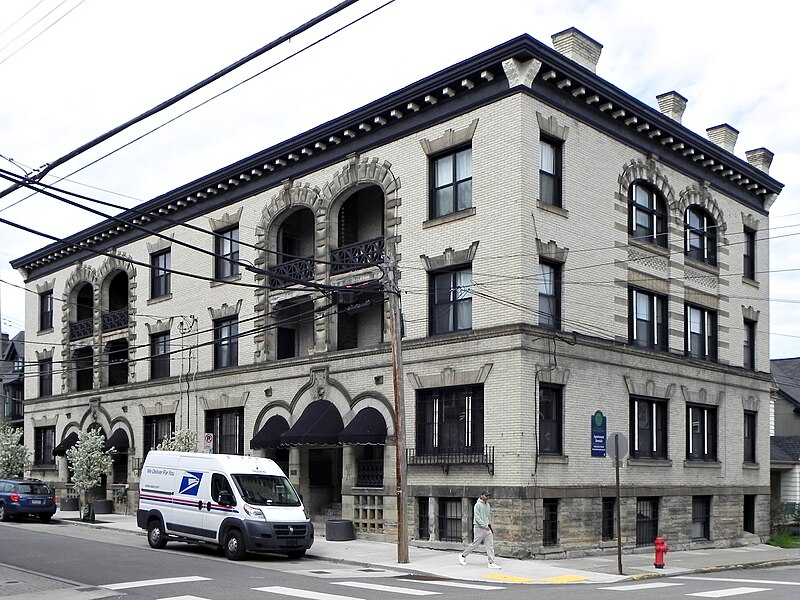



Edward Weber was best known for his school designs—notably Central Catholic High School and St. Mark’s School in the McKees Rocks Bottoms. The sense of fairy-tale whimsy he showed in those designs was on full display in this house, which Weber designed for Louis Brown in 1913. It shows the same Jugendstil influence that we identified in the Lilian Henius house in Highland Park, which was designed by our noted early modernists Kiehnel & Elliott; this one is on a grander scale, but if we did not know the architect we would be forgiven for speculating that the two houses were drawn with the same pencil.




We should have put a utility-cable trigger warning at the top of this article, but too late now. The block of St. James Street between Ellsworth Avenue and Pembroke Place is lined with fine houses in an interesting variety of styles, and here are some of them.
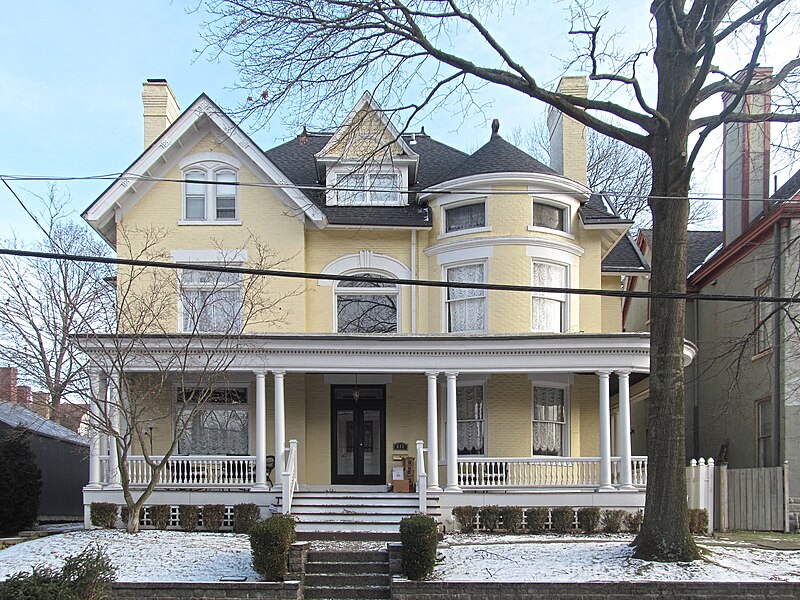










It is well known that old Pa Pitt loves good chimney pots, and these are just right for this house.
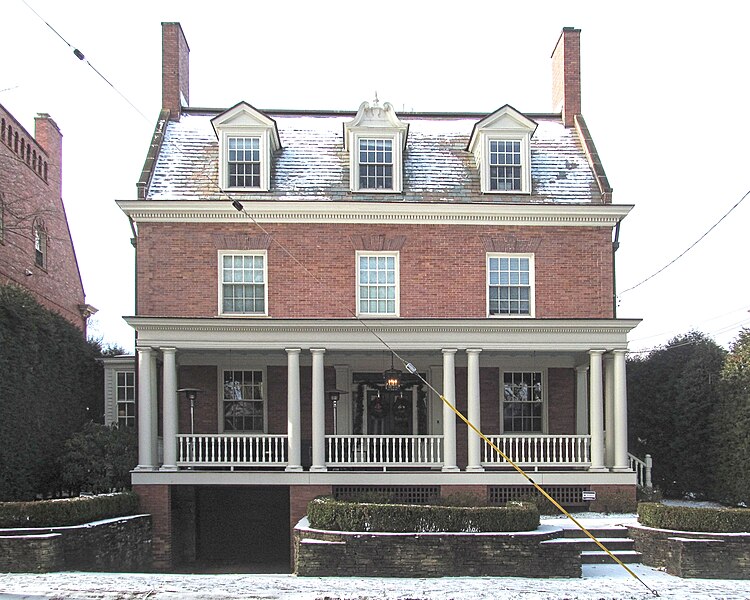
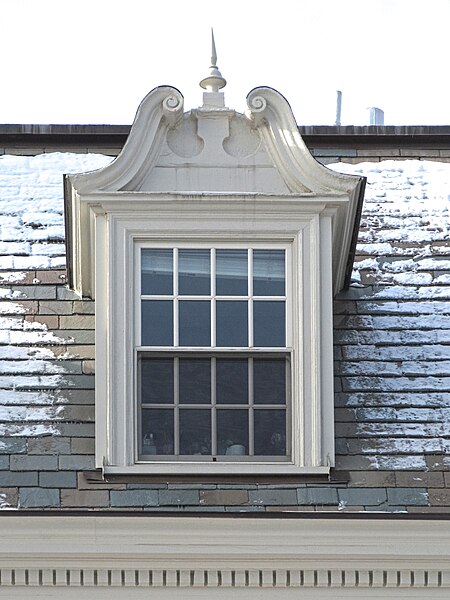
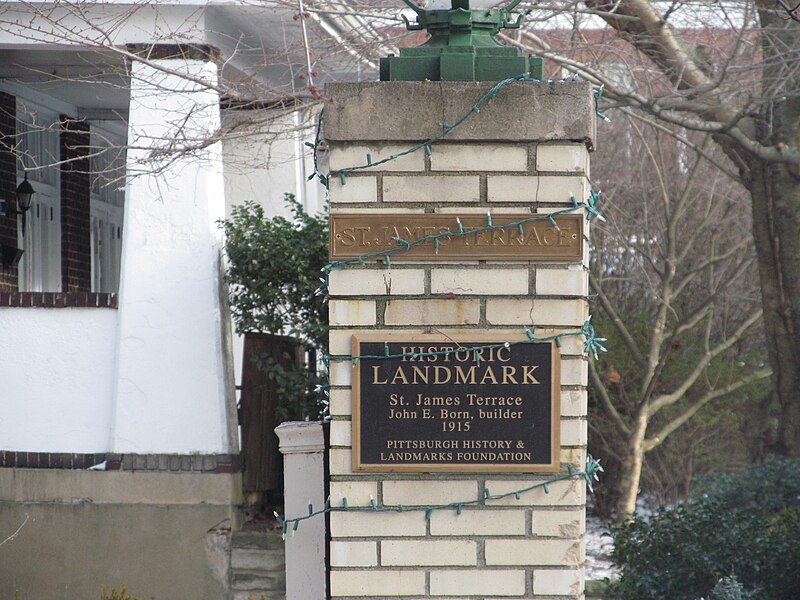
The Pittsburgh History and Landmarks Foundation historic marker at the entrance tells us all Father Pitt knows about St. James Terrace: that it was built in 1915, and that the builder was John E. Born. Perhaps we will discover the architect one of these days.
St. James Terrace is an enclave within an enclave: it branches off the narrow dead-end St. James Place, but with no access for vehicles. Instead, the houses are arranged around a narrow but beautiful garden court, which looks very romantic in the snow.






Many of the apartment buildings in the East End sold a kind of architectural fantasy to prospective residents. The Georgian went the obvious step further and named itself after its own architectural style. It adapts Georgian elements with some success to the configuration of a large city apartment house, arranged around a pleasant garden court. The needs of the automobile, however, mean that the dominant impression as we read the name of the building in front is of a blank metal door. Father Pitt decided to crop out the garage door for the picture of the court below.
